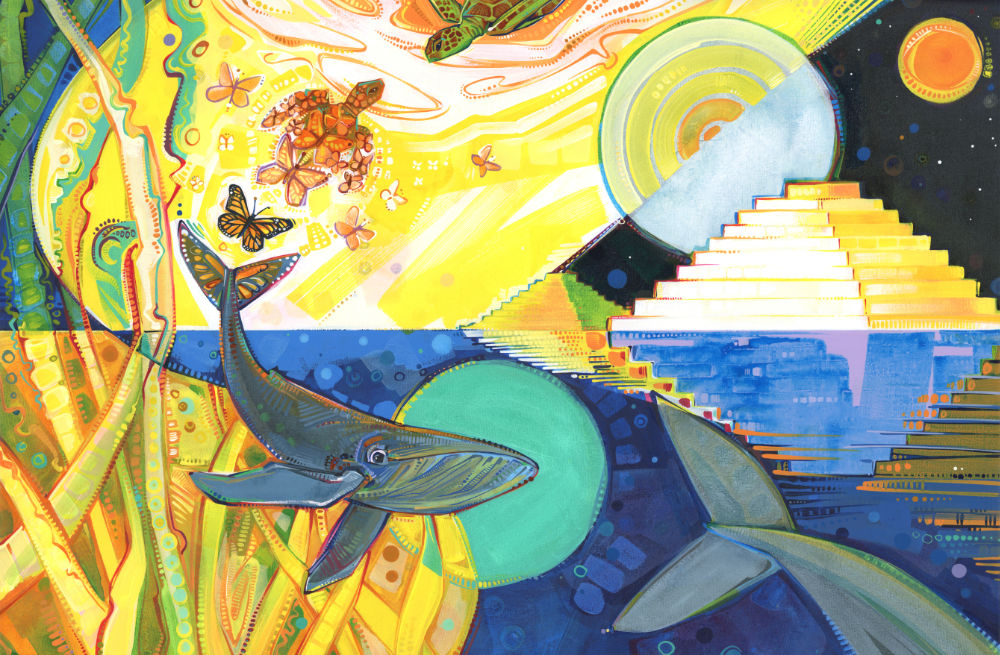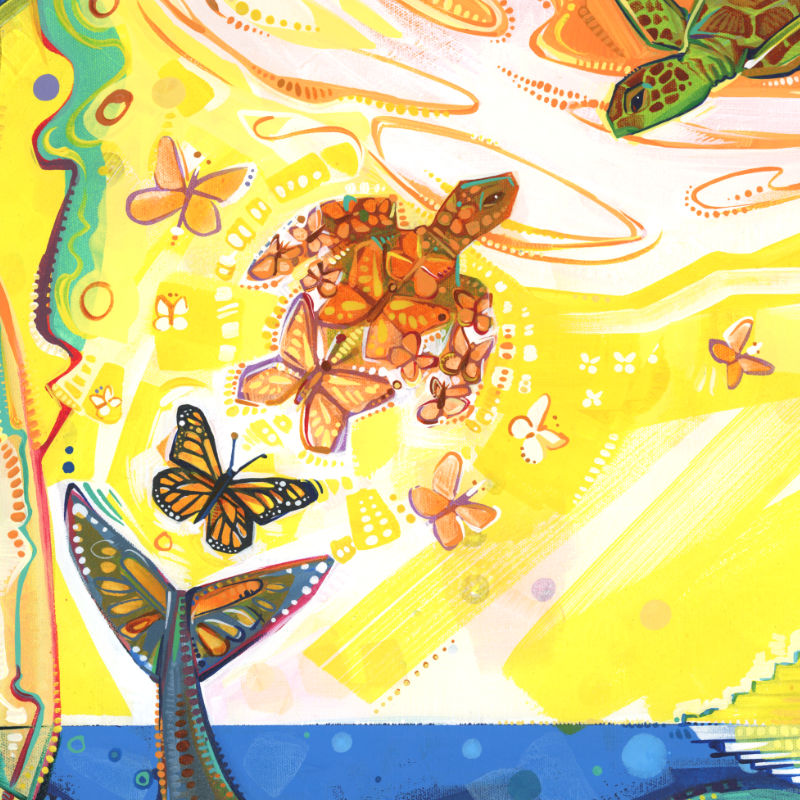Blog / 2024 / Mistake #15: Thinking My Positivity Would Make My Art Better
February 1, 2024
Last spring, I celebrated my twentieth artiversary, and to mark the moment I’ve been blogging about everyday mistakes, things like blaming myself for being too nice.
Today I’m talking about positive thinking and how it restricts creativity. I’ve talked before about the “mindset for success” types and how holding onto a strictly sunshiny attitude harms your ability to make a living as an artist. This time, we’re going to look at how it limits the art you can create.
The problem starts with an intense focus on positivity—the sort of harsh prioritizing that requires you to dismiss all other kinds of feelings—but it goes to a dark place very quickly.
First, you stop letting yourself acknowledge anything besides shiny-happy emotions, even though you still have less-than-positive feelings at times. Then, you begin to hide your true emotional state from others as well, training yourself to be less and less vulnerable.
And when you aren’t open with others, true compassion is hard to come by. You’re so busy policing the people around you, trying to get them to be more positive so they can “attract” good things into their life, that you forget that sometimes people just need their misery to be acknowledged, not fixed.
All of this can make you a not-very-fun person to be around, for sure, but, more importantly for the purpose of this post, it can push you into being a superficial artist. Because expression and communication in art come from a deep well of feeling, and, obsessing about a positive mindset causes you disengage from your emotions.

Deeper Layers
2023
acrylic on canvas
24 x 36 inches
When I was first starting out, long before I made paintings like this one for a client who wanted to see how I’d depict the feeling of diving ever-deeper, I tended to stay a bit more surface-y in my art.
I painted portraits exclusively, and, though I’d sometimes gather groups of people around a concept—like painting local television news personalities or men I was meeting online—the finished artworks were always depictions of the head and shoulders of a human.
Around that time, I had a chat with a gallery owner who gravitated towards experimental work. In retrospect, it’s clear that this person would never be interested in my art, but I was convinced that my unusual painting style paired with the concepts behind the faces would put my simple portraits in the experimental category. The gallery owner disagreed, telling me:
“When I was in art school, they always told me to ask myself ‘so what?’ as I made a work. You might try that.”
At the time, I thought the gallerist was being unnecessarily cruel* but their question stuck with me. From that moment on, I started working on putting more of myself directly into my paintings, instead of layering on meaning later with a pointed artist statement.
Diving ever-deeper into my feelings can be scary, but it also tends to be tiring. As a kid, it was made clear to me that my big negative emotions were stupid and uninteresting, and it’s hard to break out of that default setting in my mind. Every time I push past my inclination to roll my eyes at my own mind and instead allow myself to feel difficult feelings, I’m rewarded with experiences like painting this dreamscape for a patron.

The original image already has a forever home obviously, but you can buy prints and other pretty things here in my print shop.
* I don’t endorse saying things like this to 24 year old artists, even though, in this case, the 24 year old did manage to make something of the feedback. I don’t care who you are—or who you think you are. It’s never your job to bludgeon someone’s creativity to death.
(Post script to the post script: I must have blocked out the gallerist’s name and I can’t be arsed to sort through my journals to find it, but I know their gallery closed years ago. I like to imagine that they’ve since moved on to a corporate gig unrelated to art and they ask themselves every day “so what?”—only they’re asking it about their life, not their art.)
(Post script to the post script of the post script: I blogged about this conversation sixteen years ago, and, in that version of the story, I acted like the “so what?” wasn’t that big of a deal. I’m proud to have shed enough of my toxic positivity to be able to admit to you that I find the gallerist’s behavior inexcusable.)
Here are all twenty mistakes I’ve share to celebrate my twenty years as a professional artist:
- Putting off making changes.
- Publishing art that’s not my best.
- Trying to be like everyone else.
- Worrying about being too sensitive.
- Blaming myself for being too nice.
- Confusing bravery with confidence.
- Not realizing that people want me to succeed.
- Hiding my queer identity for years.
- Feeling guilty about wanting to earn money with my art.
- Not asking for help enough.
- People pleasing.
- Being afraid of feedback.
- Not listening enough.
- Believing in the big break.
- Thinking my positivity would make my art better.
- Getting on social media in the first place.
- Expecting my creativity to be linear.
- Worrying about cheating in art.
- Being afraid to start.
- Failing to appreciate my mistakes.
Did this post make you think of something you want to share with me? I’d love to hear from you!
To receive an email every time I publish a new article or video, sign up for my special mailing list.

